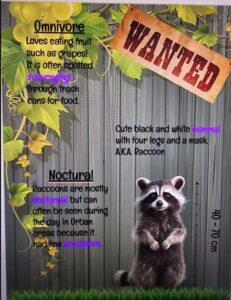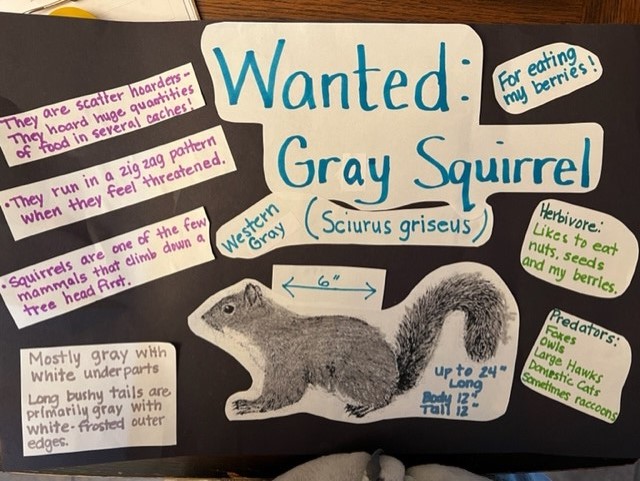One PEI workshop broke the record last year for the most registered participants ever. A November ‘Fostering Outdoor Observation Skills’ training had 177 teachers enrolled and 80 who attended.
What makes this workshop, affectionately known as ‘FOOS,’ so popular?
“A lot of things we talk about at this workshop are applicable for non-science elementary teachers and English Language Arts teachers,” explains PEI’s Associate Director, Puget Sound Region Molly Griffiths. “I think that’s the reason it’s so well-received.”

The workshop unfolded in two parts. On day one, PEI staff introduced the FOOS guide and showed how to use field journals/science notebooks with students. They also facilitated several activities from the guide. A perennial favorite involves creating a ‘wanted’ poster or field guide page about a plant or animal near their ‘sit spot.’ Teachers get highly creative with their posters and gain perspective on what their students will experience.
“Getting my students out of their seats, but also out of the building has opened a new zest for learning in our room. The joy of learning has multiplied ten-fold. My students are thrilled to see what we will be doing each day and I have complete engagement and enthusiasm throughout the day.”
— Shannon Thompson, 3rd-Grade Teacher, Brouillet Elementary School
The second day saw participants break up into regional groups where they met with their regional coordinator, heard from a local guest speaker and split into small groups to discuss integrating FOOS with their students. Some educators have been implementing different aspects of FOOS with students as part of a cohort within the larger workshop.
Shannon Thompson is one of them. Thompson teaches third grade in the QuEST Program at Brouillet Elementary School in Puyallup and finds that incorporating FOOS into her curriculum boosts student engagement.
“Getting my students out of their seats, but also out of the building has opened a new zest for learning in our room,” says Thompson. “The joy of learning has multiplied ten-fold. My students are thrilled to see what we will be doing each day and I have complete engagement and enthusiasm throughout the day.”
Thompson takes her students outdoors regularly to visit ‘sit spots’ and observe how nature is changing around them, an activity she finds useful for integrating science and math. “Finding areas on our playground and field helps to cement the ideas in our minds,” she explains.
For one math lesson, students needed to calculate how large an area they would need for an animal pen. They went outside to identify areas where they could place a pen and determine how much space it would require. Students worked together to mark off a section of the field, find the square feet and perimeter and research different areas of the playground where they could set up the pen.
“They used all of their senses to determine the best spot based on what they observed outside,” says Thompson. “We could have easily looked at pictures indoors, but this lesson will stick with this class for years to come.”
The students aren’t the only ones who benefit. Thompson also came away from the lesson with new insights. “The first is that academic subjects do not have to be taught separately,” she notes. “In life, we do not section off space for math or science or language.”
“The second is that academics can and should be fun. If students are enjoying what they’re doing, they will work to their potential.”
